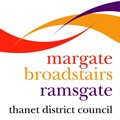Delve into the stories, quirky facts and history of Margate, Broadstairs and Ramsgate's coastline
Ever wondered how Viking Bay got its name or what the connection is with Botany Bay Australia. Delve into the stories, quirky facts and history of Margate, Broadstairs and Ramsgate's coastline
•Our coastline represents 20% of the UK’s and 12% of Europe’s coastal chalk and we have the longest continuous stretch of coastal chalk in Britain
•North East Kent Marine Protected Area - The whole of our coastline is covered by international and national designations for its marine and bird life
•Thanet has 250 hectares of internationally important chalk reef, on which extensive amounts of seaweed grows. When this washes up on our beaches it provides a wide range of benefits to local wildlife as it is recycled back into nature. Learn about the Council's seaweed collection
•In the 1700s, bathing in the sea and drinking seawater became a fashionable cure for all sorts of diseases. From the Georgian period onwards visitors from London began flocking to resorts like Margate for the seawater cure and increasingly as a place to socialise. Margate has built a reputation as a place for bathing in the sea – both for health and pleasure.
•Margate has a special place in the history of the ’Bathing Machine’ with Benjamin Beale inventing the modest hood in 1753. This canvas canopy could be lowered and raised by the driver of the machine, allowing bathers a modicum of privacy as well as some protection from wind and waves
•In 1791 The Royal Sea Bathing Hospital, opened in Margate for those seeking a cure for tuberculosis. Patients were exposed to the fresh sea air and the hospital had its own seawater reservoir. This was the first of its kind
•Still in place at St Mildred’s Bay, the World War I seaplane lookout. In 1916 it proved too dangerous to continue landing planes here, so Manston airfield was developed
•Margate Marine Bathing Pavilion (Sun Deck) on Margate Main Sands was the first of its kind anywhere
•Margate, was the first place to offer and popularise donkey rides on the beach, starting back in the early 1800s.
•Whilst in Margate recuperating from a nervous breakdown, TS Eliot sat at the grade II listed shelter on Margate seafront and composed the key lines in his poem ’The Waste Land’ - “On Margate Sands./I can connect/Nothing with nothing./The broken fingernails of dirty hands./My people humble people who expect/Nothing”
•Walpole Bay tidal swimming pool was built in 1937
•Botany Bay got its name because the common fate of a captured smuggler was deportation to Botany Bay in Australia on a convict ship. In the late 18th century there was a big battle here between the smugglers and the revenue men, which resulted in quite a few fatalities
•Kingsgate Bay was originally called “St Bartholomew’s Gate” until King Charles II landed here for safety during a storm and he ordered that the name be changed to Kingsgate Bay
•The 39 Steps, was written by John Buchan in Broadstairs in 1915. The name 'The Thirty-Nine Steps' is said to have originated from the author's daughter counting the 78 wooden steps leading to the beach from the cliff top on the North Foreland, by the house where John Buchan was staying. Buchan halved the number for a catchier title. The original steps were later replaced by 105 concrete ones and are still there today
•Joss Snelling, the notorious smuggler and head of the Callis Court Gang was named after Joss Bay. He was fined £100 for smuggling at the age of 89!
•Stone Bay was the location of a very bloody battle between smugglers and revenue men in which a revenue man was covered in tar to be set alight but was then saved!!!
•Viking Bay was actually the training ground of the British Olympians for 1924 Paris Olympics. (A very famous storyline depicted in the film ‘Chariots of Fire’)
•Viking Bay was renamed in 1949 after the commemorative landing of a Viking Ship, marking 1500 years since the landing of Hengist and Horsa
•Louisa Bay was originally called ‘Goodstone steps’. Thomas Russell Crampton built a lattice-work bridge across the gap her and it was renamed ‘Louisa Bay’ after one of his family members
•Pegwell Bay is part of Kent’s largest National Nature Reserve
•What better way to celebrate our coastline than purchasing locally harvested seaweed skin care products and fragrances from ‘People Care, Planet Care’
If this has got you intrigued, discover more of our area's interesting facts with our 'Did You Know'

Visitor Information Centre The Droit House Stone Pier Margate Kent CT9 1JD Te: 01843 577577 Email: visitorinformation@thanet.gov.uk www.visitthanetbusiness.co.uk
